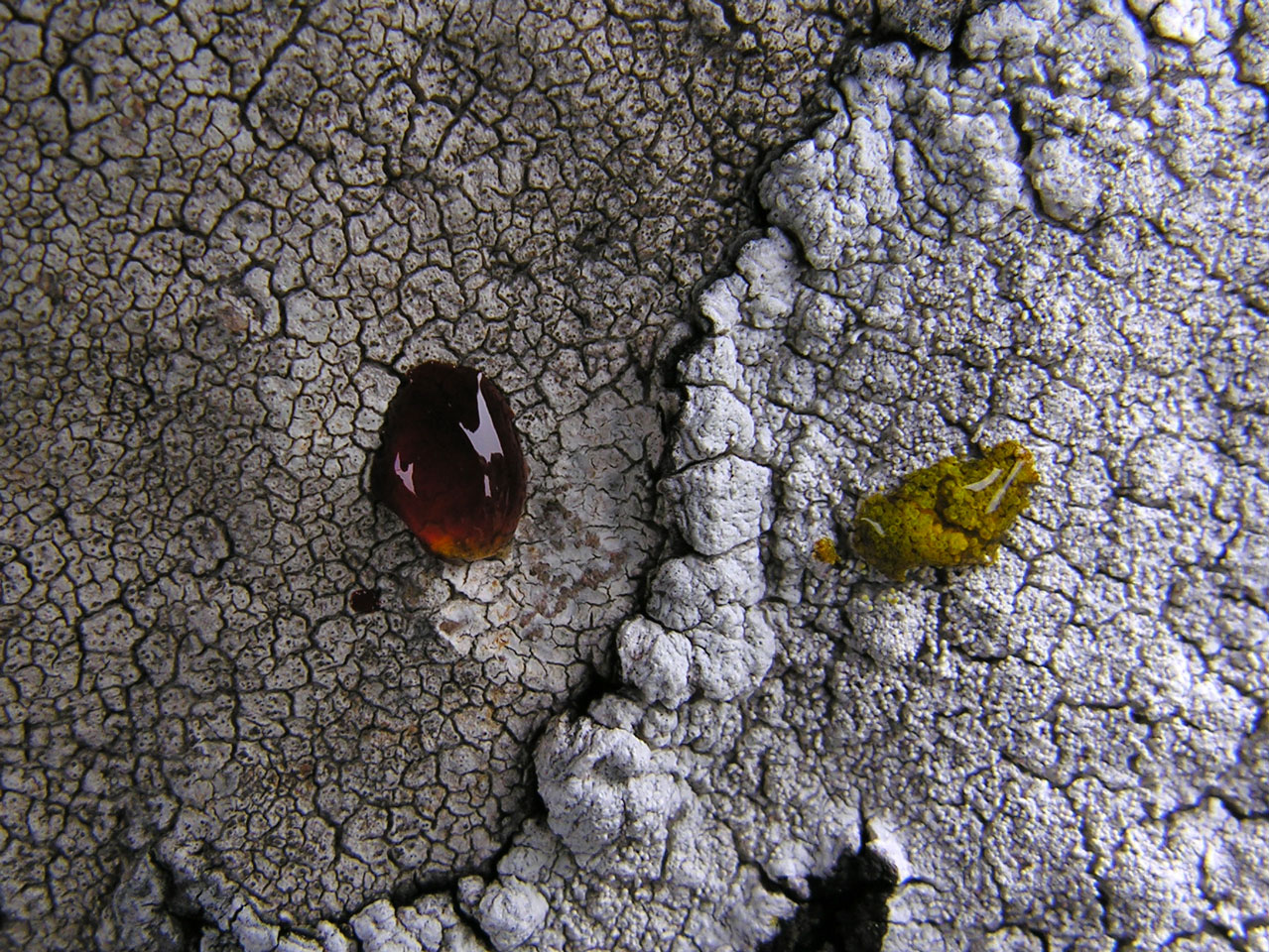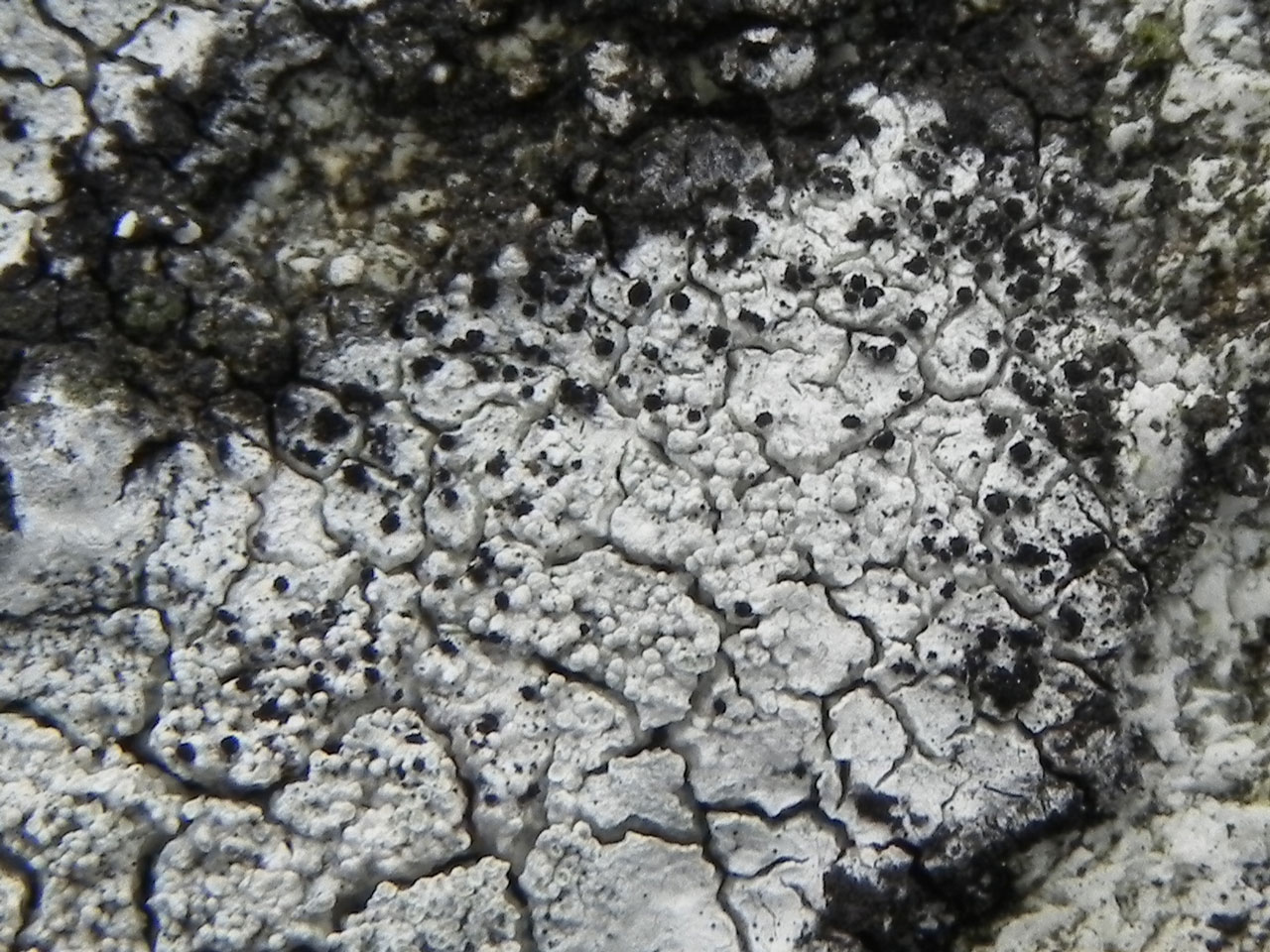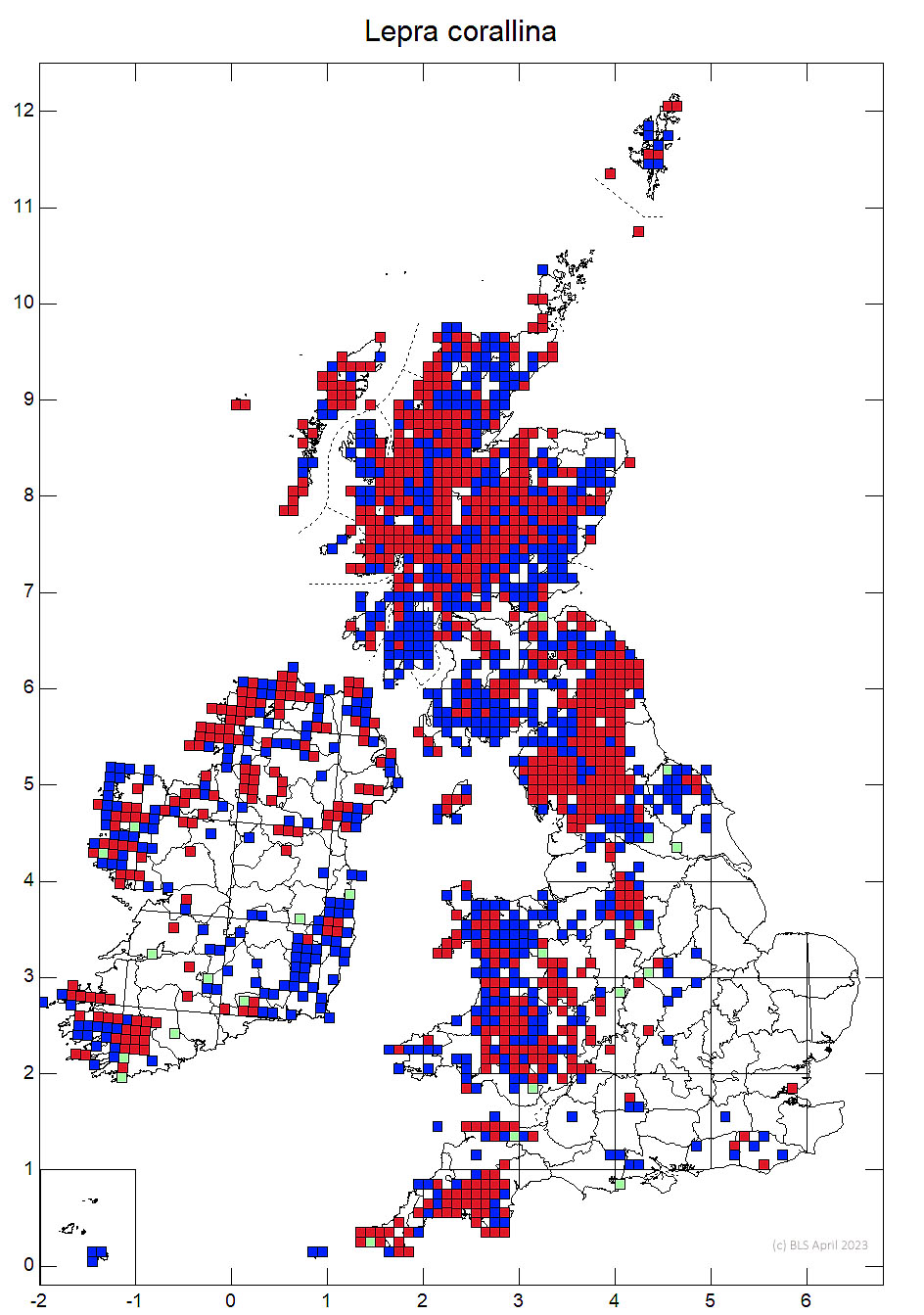Description from Cannon et al (2021) below.
Thallus rather thick, pure white to pale or dark grey, continuous, rimose-areolate; prothallus often conspicuous, white; isidia 0.1–0.3 mm diam., abundant, often covering the thallus, cylindrical or becoming coralloid, erect or ± decumbent and unoriented. Fertile warts rare, 1.5–2 mm diam., convex, sharply constricted at the base, often with an uneven to warted upper surface enclosing 2-4 (-11) apothecia; apothecial disc 0.3–0.5 mm, ± expanded, flat or ± convex, pale or dark brown, often faintly white- pruinose. Asci 2-spored. Ascospores 80–140 (–230) × 40–80 μm; wall 2–3 μm thick, not zoned or striate. Thallus C–, K+ yellow to yellow-orange, KC+ yellow, Pd+ yellow-red, UV– (thamnolic acid).
Characterised by the white-grey, isidiate thallus, the isidia being cylindrical-coralloid and without brown apices, and by the presence of thamnolic acid. Pertusaria pseudocorallina has a pale green-grey thallus with a brownish tinge, shorter, ± globose isidia with brown apices and is K+ yellow→red (crystals). P. coccodes is greener grey and also K+ yellow→red (crystals). Thalli commonly support black sporodochial tufts of the lichenicolous hyphomycete Sclerococcum sphaerale, the presence of which suppresses isidial formation in the host.
On dry, siliceous rocks, mainly in upland areas, very rarely on bark (Birch) and wood.

Common, throughout Britain and Ireland, very rare in S.E. and C. England.
Cannon, P., Kukwa, M., Coppins, B., Fletcher, A., Sanderson, N. & Simkin, J. (2021). Pertusariales: Ochrolechiaceae, including the genera Lepra, Ochrolechia and Varicellaria. Revisions of British and Irish Lichens 5: 1-17. Link




